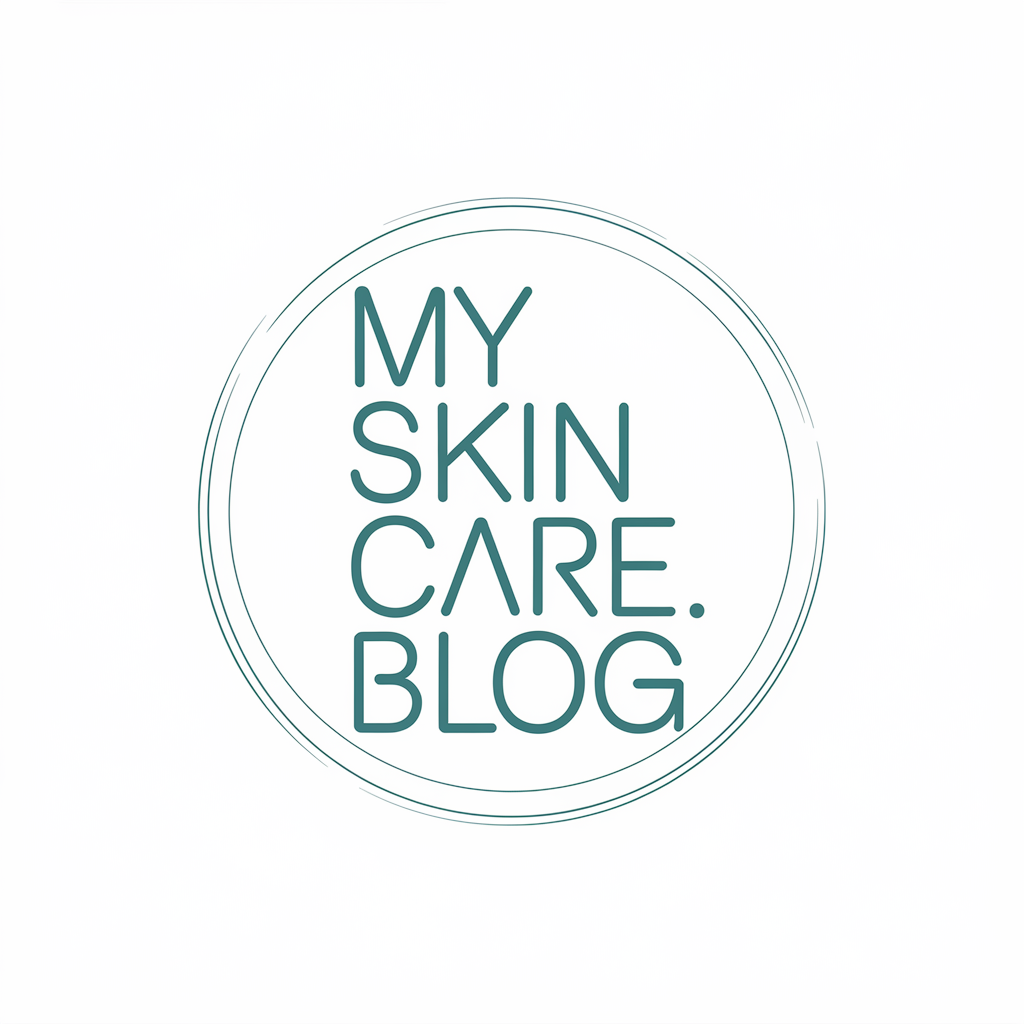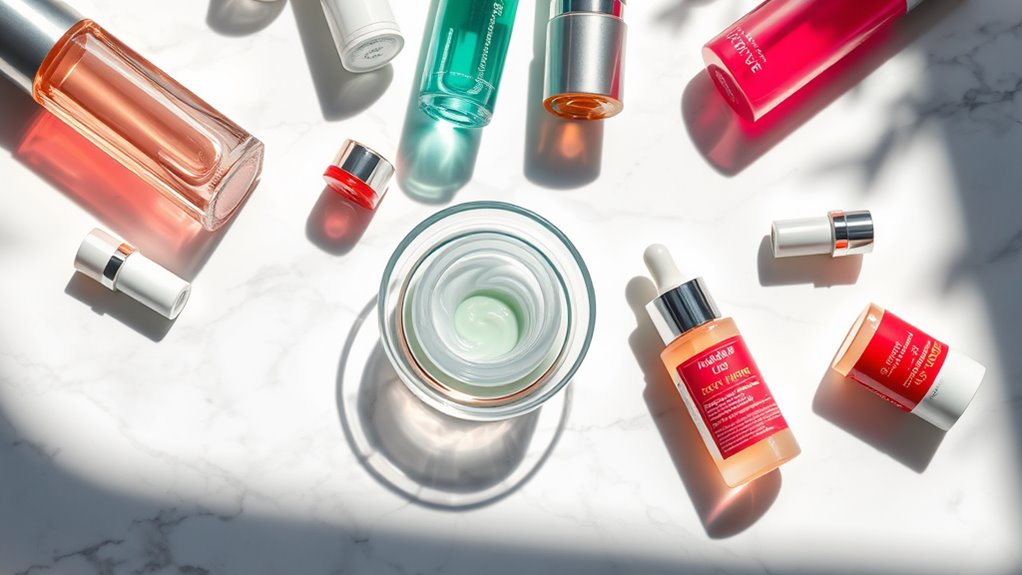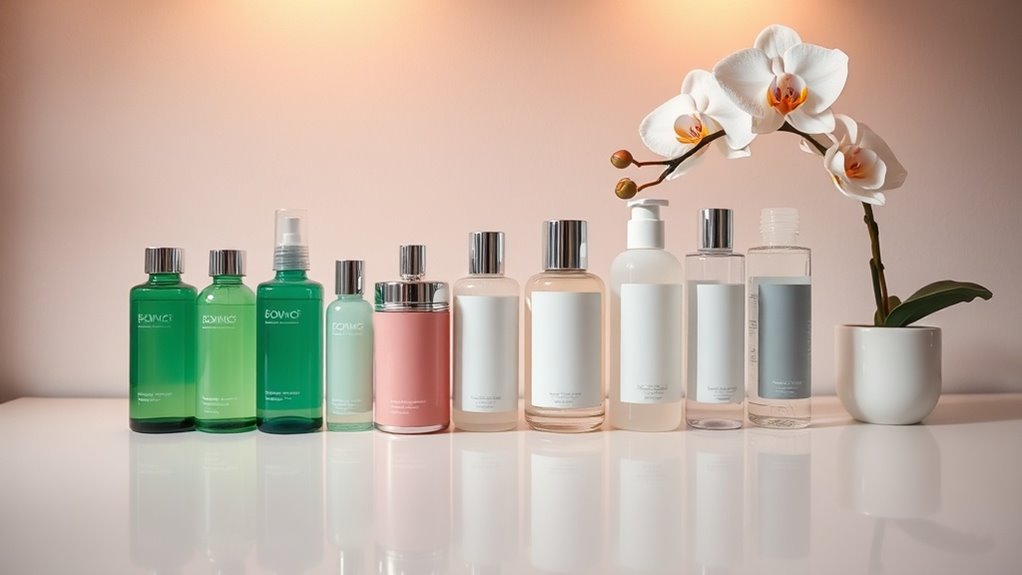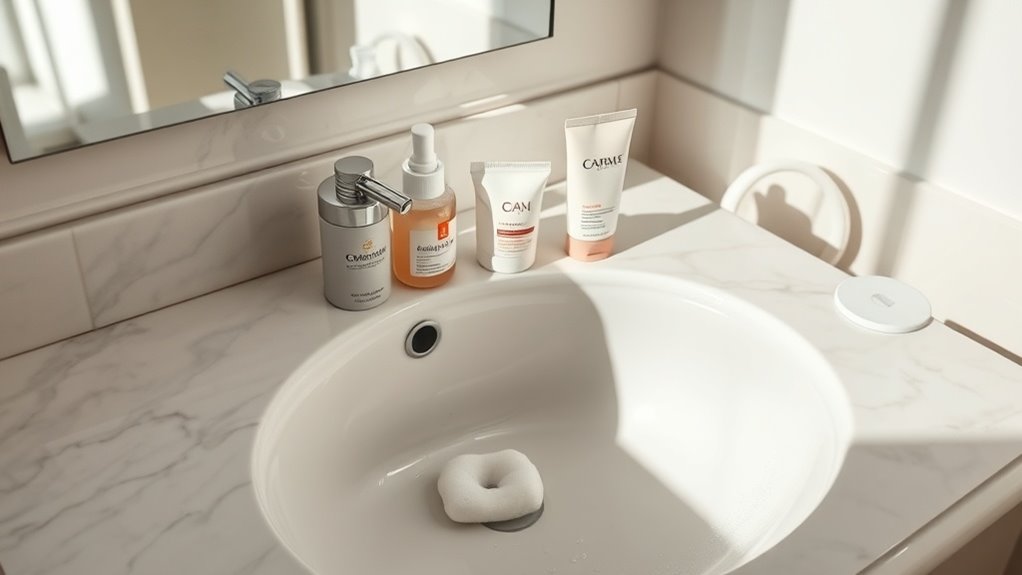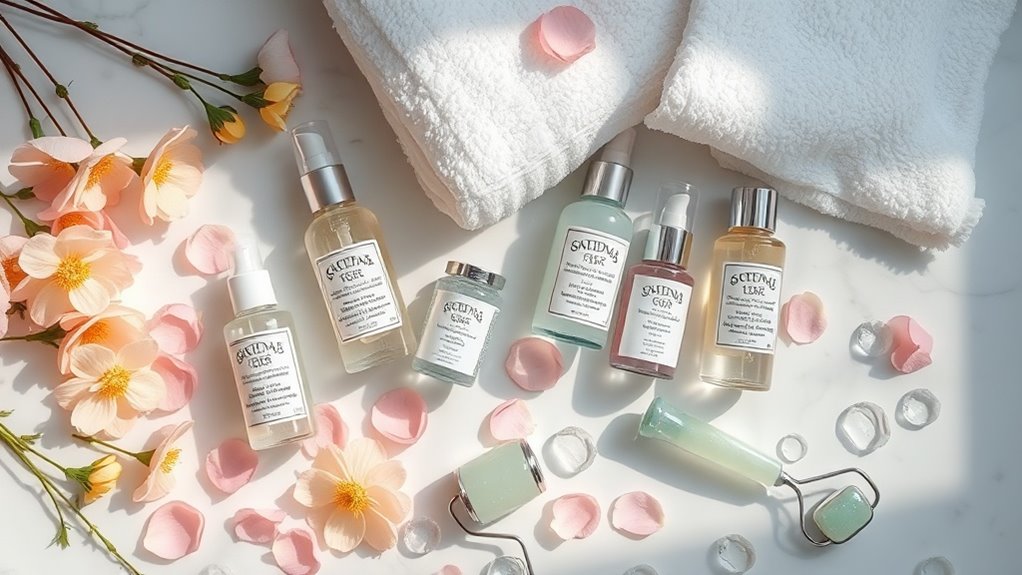The Hidden Dangers of Mixing Skincare Products
Mixing skincare products might seem harmless, but it can disrupt your skin’s delicate pH balance and lead to irritation. Certain combinations, like vitamin C with retinol, can heighten sensitivity and diminish effectiveness. The risks don’t stop there; synthetic fragrances and preservatives can trigger allergic reactions. Understanding these hidden dangers is essential for maintaining skin health. So, how do you make sure your routine is safe and effective?
Key Takeaways
- Mixing products with differing pH levels can disrupt your skin’s balance, leading to irritation and reduced efficacy.
- Combining actives like vitamin C and retinol may destabilize their effectiveness and cause skin irritation or sensitivity.
- Layering exfoliants with retinol can result in over-exfoliation, redness, and peeling, complicating your skincare routine.
- Synthetic fragrances and preservatives can provoke allergic reactions or exacerbate skin conditions, especially for sensitive skin types.
- Gradually introducing new products and conducting patch tests helps monitor for adverse reactions, ensuring a harmonious skincare routine.
Understanding the Skin’s Ph Balance
Why is understanding your skin’s pH balance essential for effective skincare?
Your skin’s pH level affects its barrier function and overall health.
When you combine products, their pH levels can interact, potentially disrupting this balance.
For instance, using an acidic exfoliant with an alkaline moisturizer can hinder absorption and efficacy.
You need to be mindful of product combinations; maintaining a balanced pH helps prevent irritation and promotes ideal results. Additionally, incorrect product layering can further complicate your skincare routine and diminish its effectiveness.
Common Ingredients That Don’t Mix Well
Maintaining your skin’s pH balance is just the first step; knowing which ingredients can clash is equally important for best results.
For instance, mixing vitamin C with retinol can destabilize both, reducing their effectiveness. Additionally, combining AHAs or BHAs with retinol may lead to irritation and over-exfoliation. Likewise, layering niacinamide with vitamin C can result in skin sensitivity due to pH shifts.
Always check formulations for conflicting ingredients before applying. Understanding these interactions helps you create a harmonious skincare routine that enhances your skin’s health, ensuring you reap the maximum benefits from your chosen products without risking adverse effects. Additionally, being aware of key ingredients that can interact negatively is crucial for optimizing your skincare regimen.
Potential Reactions From Combining Actives
Combining potent actives like retinol, vitamin C, and AHAs can destabilize their effectiveness, causing irritation or skin barrier damage. For instance, layering retinol with AHAs may intensify redness and peeling. These reactions occur due to pH imbalances and over-exfoliation. Moreover, some combinations may neutralize each other’s benefits, rendering your efforts ineffective. It’s essential to understand your skin type and the specific actives you’re using. Always introduce one product at a time, allowing your skin to adjust and monitor for any adverse reactions that might arise. Additionally, be cautious of over-exfoliation risks, as they can further compromise your skin’s protective barrier.
The Role of Fragrance and Preservatives
Fragrance and preservatives play essential roles in skincare formulations, but they can also introduce risks, especially for sensitive skin.
Many products contain synthetic fragrances, which can lead to irritation, allergic reactions, or exacerbation of existing skin conditions.
Similarly, preservatives, while essential for preventing bacterial growth and prolonging shelf life, can provoke reactions in those with sensitivities.
When mixing products, be cautious of overlapping fragrances and preservatives, as these combinations may amplify adverse reactions.
Always check ingredient labels and opt for fragrance-free and paraben-free options if you’re prone to sensitivity.
Prioritizing your skin’s health means understanding these potential hazards. Additionally, it’s worth noting that certain toxic ingredients in skincare can heighten the risk of negative reactions, making it crucial to choose wisely.
How to Identify Your Skin’s Needs
What’s the best way to determine your skin’s unique needs? Start by evaluating your skin type, sensitivities, and concerns. Conduct a patch test for new products, and observe how your skin reacts over time. Utilize the following table to categorize your skin’s needs effectively:
| Skin Type | Common Concerns | Recommended Ingredients |
|---|---|---|
| Oily | Acne, enlarged pores | Salicylic acid, niacinamide |
| Dry | Flakiness, tightness | Hyaluronic acid, glycerin |
| Combination | Uneven texture, shine | Lactic acid, tea tree oil |
| Sensitive | Redness, irritation | Aloe vera, chamomile |
| Normal | Minor imperfections | Antioxidants, peptides |
Identifying your skin type accurately is crucial for mastering your skin type and ensuring you choose the right products for your individual needs.
Safe Alternatives for Layering Products
When layering skincare products, choosing compatible ingredients is essential to avoid adverse reactions. You’ll want to understand the best techniques for applying these products to maximize their benefits. Utilizing layering techniques can provide innovative ways to enhance hydration throughout the day.
Choose Compatible Ingredients
Choosing compatible ingredients is essential for achieving effective and safe skincare results.
Start by understanding the active components in your products.
For example, if you’re using a vitamin C serum, avoid layering it with products containing retinol or AHAs, as this can cause irritation.
Instead, look for hydrating ingredients like hyaluronic acid or gentle moisturizers that won’t disrupt your routine.
When selecting exfoliants, consider gentler options like lactic acid that can complement other treatments without causing harm.
Always patch-test new combinations to prevent adverse reactions, ensuring your skincare regime remains synergistic and beneficial for your skin’s health.
Layering Techniques Explained
Understanding how to layer skincare products effectively can make all the difference in achieving the best results. Follow these safe alternatives to enhance absorption and efficacy:
| Step | Product Type | Application Method |
|---|---|---|
| 1 | Cleanser | Massage, rinse |
| 2 | Toner | Apply with cotton pad |
| 3 | Serum | Pat gently into skin |
| 4 | Moisturizer | Use upward strokes |
| 5 | Sunscreen | Apply evenly, reapply |
Tips for Building a Skincare Routine
How do you create an effective skincare routine that meets your unique needs?
Start by identifying your skin type—oily, dry, combination, or sensitive.
Next, choose products tailored to address specific concerns, like acne, aging, or hyperpigmentation.
Always start with a gentle cleanser to remove impurities, followed by a targeted treatment or serum.
Don’t forget to moisturize to maintain hydration, and apply sunscreen daily to protect against UV damage.
Introduce new products gradually to monitor skin reactions, and avoid mixing incompatible ingredients, as incorrect product layering can lead to diminished effectiveness.
Consistency is key; stick to your routine for at least a month to gauge effectiveness.
